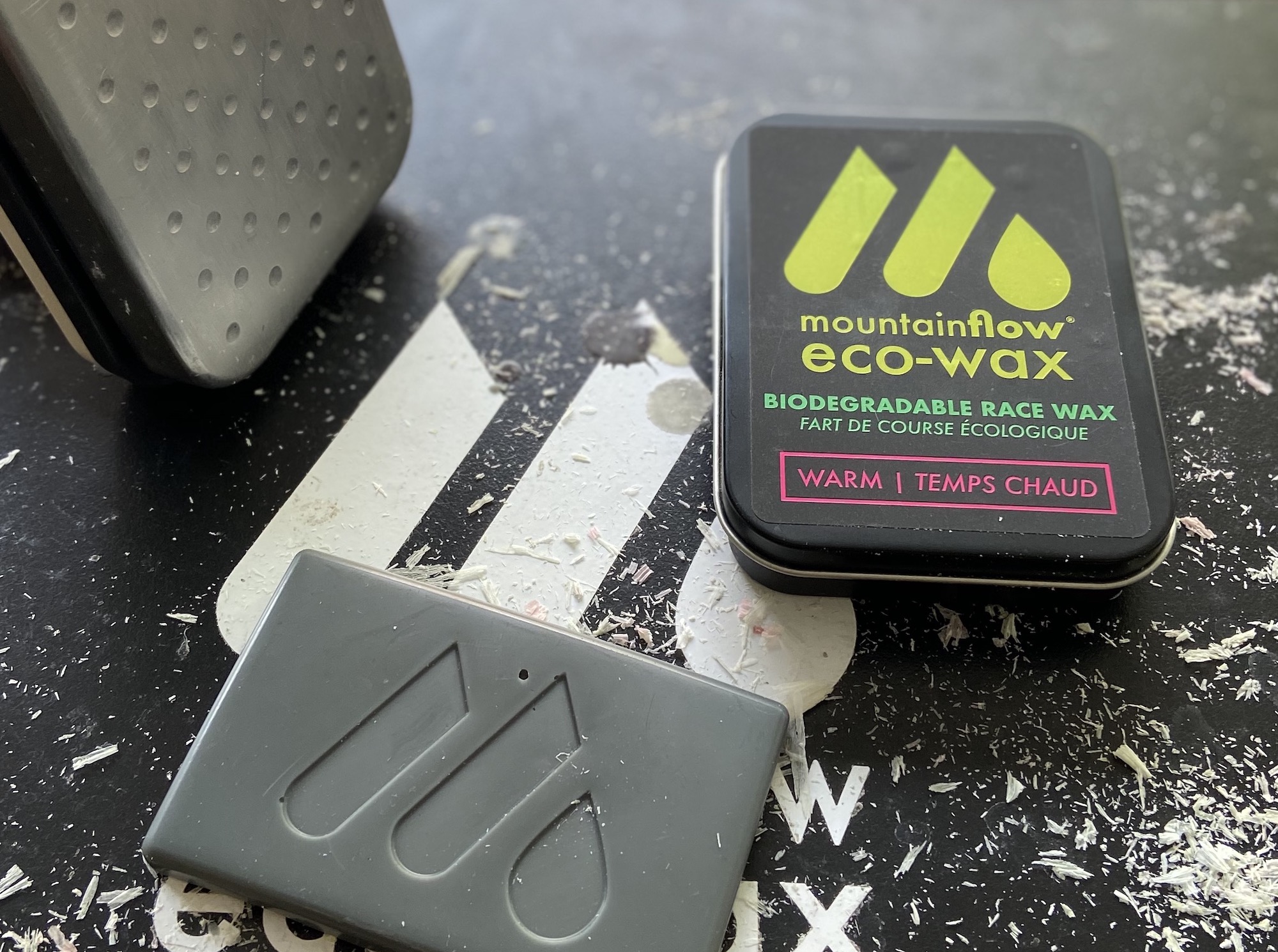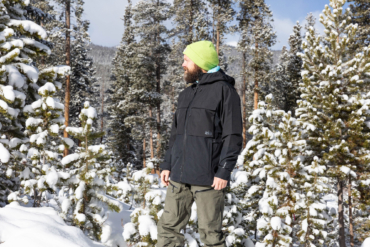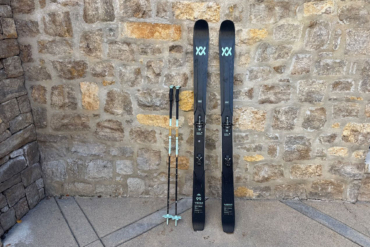No chemicals, no dyes, lower emissions — see what makes this new and innovating ski gear sustainable.
Historically, manufacturing is a dirty, not-very-eco-friendly process. But an interest to preserve the environment, specifically the beautiful snowy winters we love to play in, has driven innovators to find ways to make the gear we use in a more sustainable way. That means everything from ditching petroleum-based products to brands growing their own renewable resources.
Last winter, we joined the founders of Picture Organic Clothing in Whitefish, Mont., to test its products skiing inbounds, via a snowcat, and a backcountry yurt trip. The brand’s focus on breaking away from environmentally unsound clothing manufacturing inspired us to look for others on a similar mission. There’s a little extra cost involved, so these aren’t for the bargain-hunter, but the Earth warriors.
Here are a few companies leading the way.
Our Top Picks: Sustainable Ski Gear
Picture Organic Clothing: Demain Jacket & Pant
In 2008, three French childhood friends dropped their other careers and reunited to start a company aimed to disrupt the standard apparel manufacturing process. The founders are eliminating the use of fossil fuels in every way they can across aspects like sourcing materials, use of packaging, and shipping.
Released this fall, the Demain Jacket and Pant use a bio-sourced polyester, a PFC-free DWR treatment, and the brand’s XPore waterproof-breathable membrane (made with recycled materials). Picture creates the membrane by mechanically stretching the material to create nanopores where traditional membranes use chemicals. The membrane has a 25,000mm water column rating.
Check Jacket Price at REICheck Pant Price at Backcountry
Spektrum: Östra Bio RAW Goggles
The team at Spektrum, based in northern Sweden, is working to make the most environmentally conscious snow goggle ever. The catch? Doing so without sacrificing performance or functionality. All of the frames are constructed with mostly (over 60%) renewable, bio-based materials with injected dye. (Injected dye technology saves on greenhouse gas emissions and is a safer alternative to dipping frames in harsh solvents and coatings.)
But this winter, Spektrum is taking another eco-savvy step forward with Östra Bio RAW. The new tech is a bio-based, biodegradable, and polarized laminated lens technology they call BIOptic. The lens provides 100% UV protection (UV400) and is 75% cellulose. The Östra Bio RAW doesn’t use any dyes to avoid non-essential chemicals in the product. These will be available in fall 2021.
Check Price at SpektrummountainFLOW Eco Wax: Ski & Snowboard Race Wax
Founded in 2017 with a water-based anti-stick spray to minimize snow buildup on the topsheets of skis and splitboards, the team saw an opportunity to make a much more sustainable glide wax as well. According to the brand, it took 2 years and 200 formulations to develop a plant-based wax that stood up to petroleum-based wax. MountainFLOW has since expanded its line to include a skin wax as well.
For 2021, mountainFLOW is launching a fluoro-free, race-specific wax with an exclusive hydrophobic ceramic nanotechnology. This 100% biodegradable wax complies with the International Ski Federation (FIS) ban on fluorinated waxes.
Check Price at mountainFLOWGrown Skis: Hemp Core Skis
Instead of nonrenewable fibers made of glass or carbon traditionally found in skis, Grown Skis use a 100% industrial hemp fiber and Paulownia wood composite as well as a sandwich core construction. Why? As it grows, hemp captures carbon dioxide, a contributor to the greenhouse effect causing climate change.
According to the Grown Skis website, “this new hemp technology decreases the environmental footprint of skis by about 47 percent, compared to conventional, high-quality skis with the same production and sourcing in Europe.”
Check Price at Grown SkisAll Good Products: Sunscreen & Skin Care
Scientific studies have shown oxybenzone, an ingredient used in conventional sunscreens, to be one of the primary contributors to killing coral reefs. Even when used high in the mountains, oxybenzone does not break down and will eventually make its way through the water cycle to the ocean. This Morro Bay, California, company has been a leader in pushing for sustainable, reef-safe products since its founding in 2006.
Check Price at AmazonAuclair Sports: Eco Racer Glove
This sustainable glove uses environmentally friendly products throughout its construction. Similar to Auclair’s original Outseam Glove, it’s got a leather style and PrimaLoft insulation. The difference lies in the exterior — the surface of the glove is made of soft, durable, vegetable-tanned leather with Ariaprene eco-foam for impact protection. The glove also got updated with a recycled polyester lining. And it all contains PrimaLoft’s new Silver biodegradable insulation.
The cuff is even made with a plant-based neoprene and held together with hemp stitching. As Auclair cleverly claims, “The Eco Racer is leaving a positive handprint with a minimal footprint.”
Check Price at AuclairHoudini: Mono Air Houdi
If you haven’t heard of circular products, it’s time to start looking for them. It means a company will take back the product after it’s exceeded its useful lifespan. This does two things: (1) keeps products out of landfills, where they can take hundreds of years to break down, and (2) the company can reuse the materials to make a new product.
The Mono Air Houdi, from Sweden-based Houdini, is one of those products. It uses Polartec Power Air Light fabric to minimize the shedding of microfibers when worn or washed. What’s the big deal about shedding microfibers? According to goodonyou.eco: “Plastic particles washed off from products made with synthetic materials contribute up to 35% of the primary plastic that is polluting our oceans.”
Check Price at BackcountryKijaro: Native Comfort Chair
To build this simple vintage-style chair with a modern sustainable appeal (for socially-distant-ski-area aprés tailgating), Kijaro used raw aluminum, 100% recycled REPREVE polyester, and vegan leather. REPREVE is a polyester fabric made of recycled plastic bottles that the brand cleans and processes into tiny plastic chips. Kijaro then transforms these chips into a recycled fiber, then material.
Because Kijaro didn’t paint or anodize the aluminum (processes that can damage ecosystems), the aluminum can be immediately recycled at the end of the chair’s lifecycle. This chair doesn’t contain any chemicals on California’s Proposition 65 list. Kijaro is looking to do that with more of its products going forward.
Check Price at Kijaro















